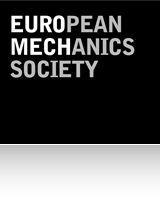471 – Turbulent Convection in Passenger Compartments
Date:
13 October 2005 – 14 October 2005
Location:
Göttingen, Germany
Contacts:
Chairpersons:
Dr. C. Wagner
DLR Göttingen, Bunsenstrasse 10
D-37073, Göttingen, Germany
Phone: +49-(0)551 709 2261,
Fax: +49-(0)551 709 2404
E-mail: claus.wagner@dlr.de
Prof. A. Thess
Technical University of Ilmenau, Germany
EUROMECH contact person: Prof. W. Schröder
Website
Forced and bouyant convection in passenger compartments of automobiles, trucks, trains and in aircraft cabins controls the thermal comfort of passengers, the air quality and the transport of polutants and pathogens. To provide a comfortable and healthy compartment or cabin environment transportation and aircraft industries conduct intensive measurement campaigns and/or use Computational Fluid Dynamics (CFD) software for air and heat flow predictions. These CFD methods are not always able to reliably predict mixed turbulent convection. One of the reasons is, that CFD results depend on the accuracy of simplified physical models. These model are needed to account for not fully understood effects like turbulence, internal and solar heat radiation and the heat conduction within the human body. Therefore, there is a high industrial demand for a better understanding of turbulent convection in passenger compartments and for reliable computational methods, accurate measurement techniques and proper test facilities.
It is the objective of the colloqium to focus on physical phenomena in turbulent convection and on numerical methods and experimental techniques needed to investigate flow and temperature distributions in passenger compartments and its effect on the passenger. Researchers from industries and research institutions should find a forum to discuss their problems and find possible solutions by launching new collaborations.

It is the objective of the colloqium to focus on physical phenomena in turbulent convection and on numerical methods and experimental techniques needed to investigate flow and temperature distributions in passenger compartments and its effect on the passenger. Researchers from industries and research institutions should find a forum to discuss their problems and find possible solutions by launching new collaborations.

